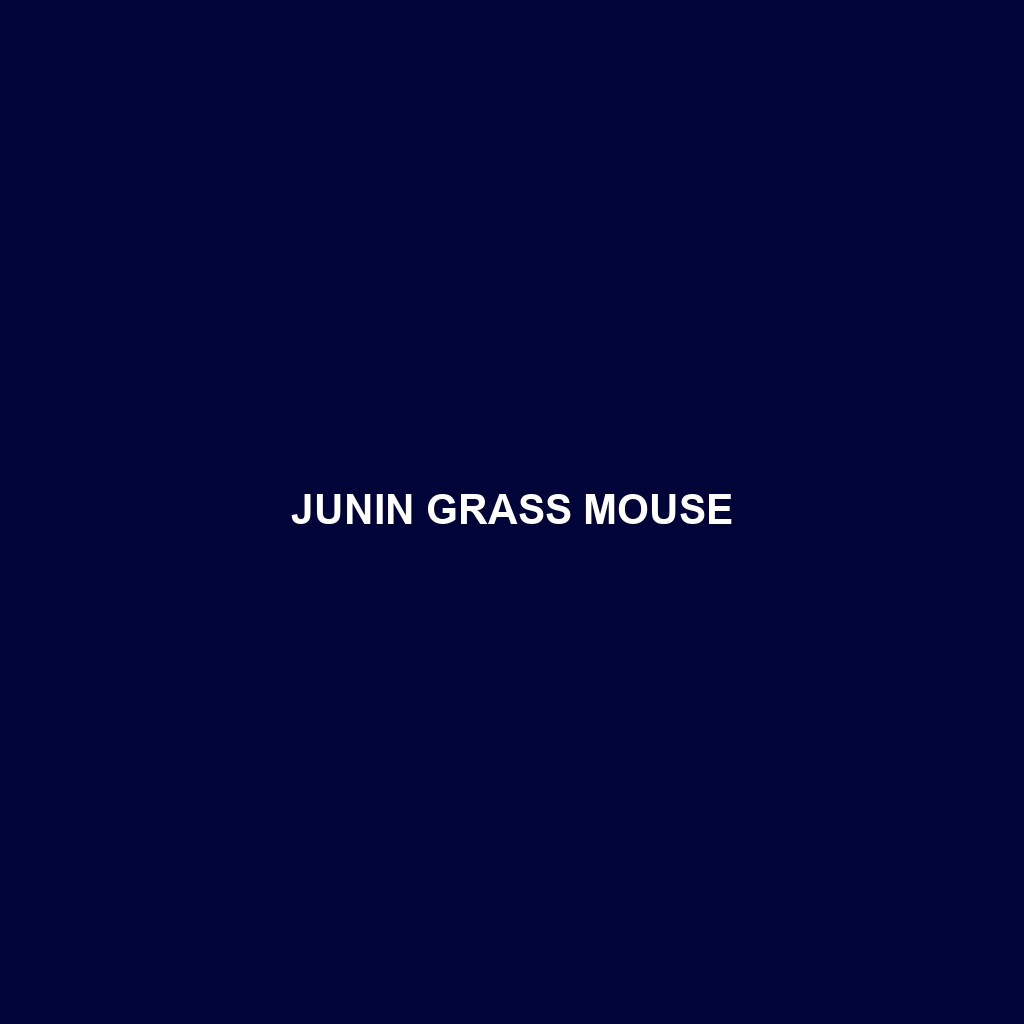Junin Grass Mouse
Common Name: Junin Grass Mouse
Scientific Name: Oligoryzomys juninensis
Habitat
The Junin Grass Mouse is primarily found in the high-altitude grasslands of central Peru, particularly in the Junín region. This species inhabits wetlands and grassy areas within the Altiplano, thriving in environments characterized by dense vegetation and moist soils. The Junin Grass Mouse’s habitat also includes regions near Lake Junín, making it adapted to the unique ecological conditions of this area.
Physical Characteristics
The Junin Grass Mouse is a small rodent that typically measures between 10 to 14 cm in body length, with a tail length of approximately 9 to 12 cm. Its fur is soft and predominantly brown, with a lighter underbelly, which helps it blend into its grassy surroundings. Notable features include large ears and elongated snouts, which are characteristic of the Oligoryzomys genus. The mouse’s small size and agile frame enable it to navigate through dense grass with ease.
Behavior
Junin Grass Mice are primarily nocturnal, exhibiting crepuscular activity patterns during twilight hours. These mice are known for their remarkable agility and can quickly evade predators by darting through tall grasses. They often create complex burrow systems underground, which serve as nests and hiding places. Socially, they tend to exhibit solitary behavior but can be seen in small groups during foraging sessions.
Diet
The diet of the Junin Grass Mouse primarily consists of seeds, grasses, and other plant materials. These mice are known to be opportunistic feeders, taking advantage of the abundant food sources available in their grassland habitats. Their feeding habits play a crucial role in seed dispersal, contributing to the health of the grassland ecosystem they inhabit.
Reproduction
Junin Grass Mice typically breed throughout the year, with peaks during the wet season, which provides optimal conditions for raising young. After a gestation period of around 20 to 25 days, females give birth to litters of 3 to 5 offspring. The young are initially altricial but develop rapidly, weaning at about three weeks of age. Maternal care is significant, as females are protective of their nests and young.
Conservation Status
The Junin Grass Mouse is currently listed as vulnerable, facing threats from habitat destruction due to agricultural expansion and environmental changes. Preservation of its natural habitat is crucial for the conservation of this unique rodent species, as it plays a significant role in the local ecosystem.
Interesting Facts
One fascinating aspect of the Junin Grass Mouse is its ability to survive in high-altitude environments that many other species cannot tolerate. Additionally, its intricate burrow systems not only provide shelter for themselves but can also benefit other small vertebrates and invertebrates that share the habitat.
Role in Ecosystem
Junin Grass Mice are an essential part of their ecosystem, acting as both seed dispersers and prey for a variety of predators, including birds and small mammals. Their feeding habits help maintain the health of the grassland vegetation, while their population dynamics can influence the balance of species within their habitat.
